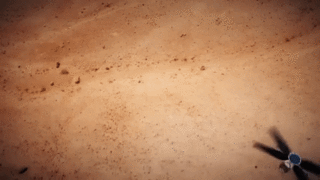To prove the practicality and potential of heavier-than-air vehicles on the Mars, NASA is sending The Mars Helicopter which is fully autonomous in its next mission. The mission, Mars 2020 will launch on a United Launch Alliance (ULA) Atlas V rocket from Space Launch Complex 41 at Cape Canaveral Air Force Station in Florida,
By doing this, NASA will have a proud history of firsts according to NASA Administrator Jim Bridenstine. “The idea of a helicopter flying the skies of another planet is thrilling. The Mars Helicopter holds much promise for our future science, discovery, and exploration missions to Mars.”

Credits: NASA/JPL-CalTech
United States of America will be first nation in history to attempt to fly the heavier-than-air craft on another world. This thrilling and idealistic reaching will inspire young people all over the United States to become scientists and engineers, paving the way for even greater discoveries in the future.
It all started in August 2013 at NASA’s Jet Propulsion Laboratory (JPL) as a technology development project. To fit this Mars Helicopter into the thin Martian atmosphere, Helicopter should weight as little as possible. With fuselage at the size of a softball, its blades will rotate at almost 3,000 rpm which is 10 times higher than the rate of a helicopter on Earth.
Traveling Mars with Mars Helicopter demonstrates science and technology innovation and is a unique break to advance Mars exploration for the future.
Of course, Mars helicopter holds built-in abilities needed to fly and fully operational at Mars, including solar cells to charge its lithium-ion batteries, and a heating mechanism to keep it warm through the cold Martian nights.
When Mars Helicopter flys at Red Planets’s low atmospheric density, it’ll break altitude record for a helicopter flying on Earth which is 40,000 feet. It’ll fly at equivalent altitude in Earth of 100000 feet up. To make it possible, the Helicopter should be light and strong as possible.
Mars Helicopter will be taken to suitable location by the rover. After its Lithium batteries will be charged and a many of tests are completed, controllers from Earth will control the Mars Helicopter to take its first autonomous flight into Red Planet.
Then it’ll go through rigorous flight test campaign to test which is five flights of incrementally distant flight distances, up to a few 100 meters, and longer durations as long as 90 seconds.
If this technology demonstration works well, it will be very useful in Mars exploration as low-flying scouts to examine the terrain which can’t be reachable by ground vehicles.































Discussion about this post